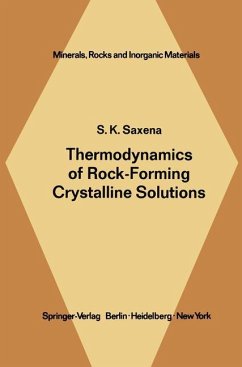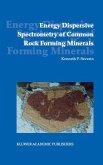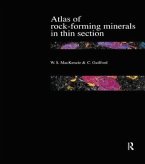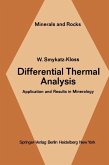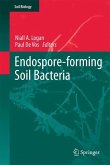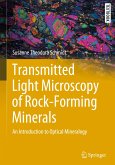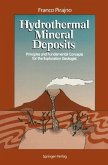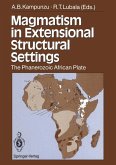and Acknowledgements.- I. Thermodynamic Relations in Crystalline Solutions.- 1. Crystalline Solutions.- 2. Choice of a Chemical Component.- 3. General Properties of Solutions.- a) Chemical Potential.- b) Ideal Crystalline Solution.- c) Non-Ideal Solutions and Excess Functions of Mixing.- d) Chemical Potential and Activity of a Component in a Mineral.- II. Thermodynamic Models for Crystalline Solutions.- 1. Regular Solution Model.- a) Zeroth Approximation.- b) Simple Mixture Model.- c) Quasi-Chemical Model.- 2. General Relations for Binary, Ternary, and Quaternary Nonideal Crystalline Solutions.- III. Thermodynamic Stability of a Solution.- 1. Critical Mixing.- 2. General Conditions.- a) Simple Mixture.- b) General Nonideal Solution.- 3. Spinodal Decomposition.- 4. Critical Mixing in Quasi-Chemical Approximation.- 5. Immiscibility in Ternary Crystalline Solutions.- 6. Formation of Miscibility Gaps in a Ternary Simple Mixture.- 7. Formation of Miscibility Gap in Asymmetric Ternary Solutions.- 8. Immiscibility in Mineral Systems.- a) Interpretation of Sequences of Mineral Assemblages.- b) Intrinsic and Extrinsic Stability.- c) Immiscibility in Garnets.- IV. Composition of Coexisting Phases.- 1. Ideal Solution Model.- a) Distribution of a Component between Two Ideal Binary Crystalline Solutions.- b) Coexisting Ternary Ideal Solutions.- 2. Nonideal Solutions.- a) Distribution of a Component between Two Simple Mixtures.- b) Coexisting Regular Ternary Solutions.- 3. Distribution of a Cation between Two or More Multicomponent Minerals.- 4. Composition of Coexisting Minerals and Chemical Equilibrium in Igneous Rocks.- 5. Physico-Chemical Conditions of Formation of Mineral Assemblages as Inferred from Composition of Coexisting Phases.- 6. Stability of Orthopyroxene.- 7. Distribution of Trace Elements.- V. Measurement of Component Activity Using Composition of Coexisting Minerals.- 1. Compositional Data Available on a Complete Distribution Isotherm.- 2. Composition Data on a Complete Distribution Isotherm and the Activity-Composition Relation in One of the Two Coexisting Phases.- 3. Examples of Calculations.- VI. Measurement of Component Activities by Analysis of Two-Phase Data.- 1. Symmetrical Mixtures.- a) Simple Mixture.- b) Symmetrical Mixture of Higher Order.- 2. Asymmetrical Solutions.- a) Subregular Model.- b) Quasi-Chemical Approximation.- 3. Example of Calculation of Functions of Mixing: The CaWO4-SrWO4 System.- 4. Coexisting Phases with Different Crystal Structures.- VII. Order-Disorder in Silicates.- 1. Order-Disorder and the Crystalline Solution Models.- 2. Intracrystalline Ion Exchange and Site Activities.- 3. Thermodynamic Functions of Mixing.- 4. Kinetics of Order-Disorder.- VIII. Pyroxene Crystalline Solution.- 1. Orthopyroxene.- a) Intersite Ion Exchange.- b) Order-Disorder on Individual Sites and the Choice of a Solution Model.- c) Determination of Site Occupancy in Heated Orthopyroxenes.- d) Sites as Simple Mixtures.- e) Thermodynamic Functions of Mixing with Sites as Simple Mixtures.- f) Sites as Solutions with Quasi-chemical Approximation.- g) Activity-Composition Relation at 873 ¿K.- h) Unmixing.- 2. Calcic Pyroxenes.- a) Intracrystalline Distribution of Fe2+ Mg and Ca.- b) Thermodynamic Nature of Mixing in M 2 from Data on Orthoenstatite-Diopside Binodal.- IX. Olivine Crystalline Solution.- 1. Bowen and Schairer¿s Data.- 2. Fe-Mg Olivines at 1200¿C.- 3. The System Monticellite (CaMgSiO 4)-Forsterite (Mg2SiO4).- X. Feldspar Crystalline Solution.- 1. Order-Disorder.- a) Potassium Feldspars.- b) Sodium Feldspar.- c) Calcium Feldspar.- d) Process of Ordering.- 2. Long-Range Ordering Parameters and the Calculation of Al Site-occupancy from Crystal-structural Data.- 3. Ideal Configurational Entropy.- 4. Thermodynamic Functions of Mixing in Binary Feldspars.- a) Monoclinic Alkali Feldspar.- b) Plagioclase.- c) Ternary Feldspars.- XI. Crystalline Solutions and Geothermometry.- 1. Intercrystalline Equilibria.- a) Distribution of a Component between Coexisting Simple Mixtures.- b) Coexisting Plagioclase and Alkali Feldspar.- c) Distribution of Fe and Mg in Coexisting Minerals.- d) Distribution of Other Elements.- 2. Order-Disorder.- a) Fe-Mg Silicates.- b) Fe-Mg Order-Disorder in Orthopyroxene.- c) Order-Disorder in Feldspars.- 3. Other Geothermometers.- Appendix: Computer Programs for Calculation of Thermodynamic Functions of Mixing in Crystalline Solutions.- References.
Hinweis: Dieser Artikel kann nur an eine deutsche Lieferadresse ausgeliefert werden.
Hinweis: Dieser Artikel kann nur an eine deutsche Lieferadresse ausgeliefert werden.

